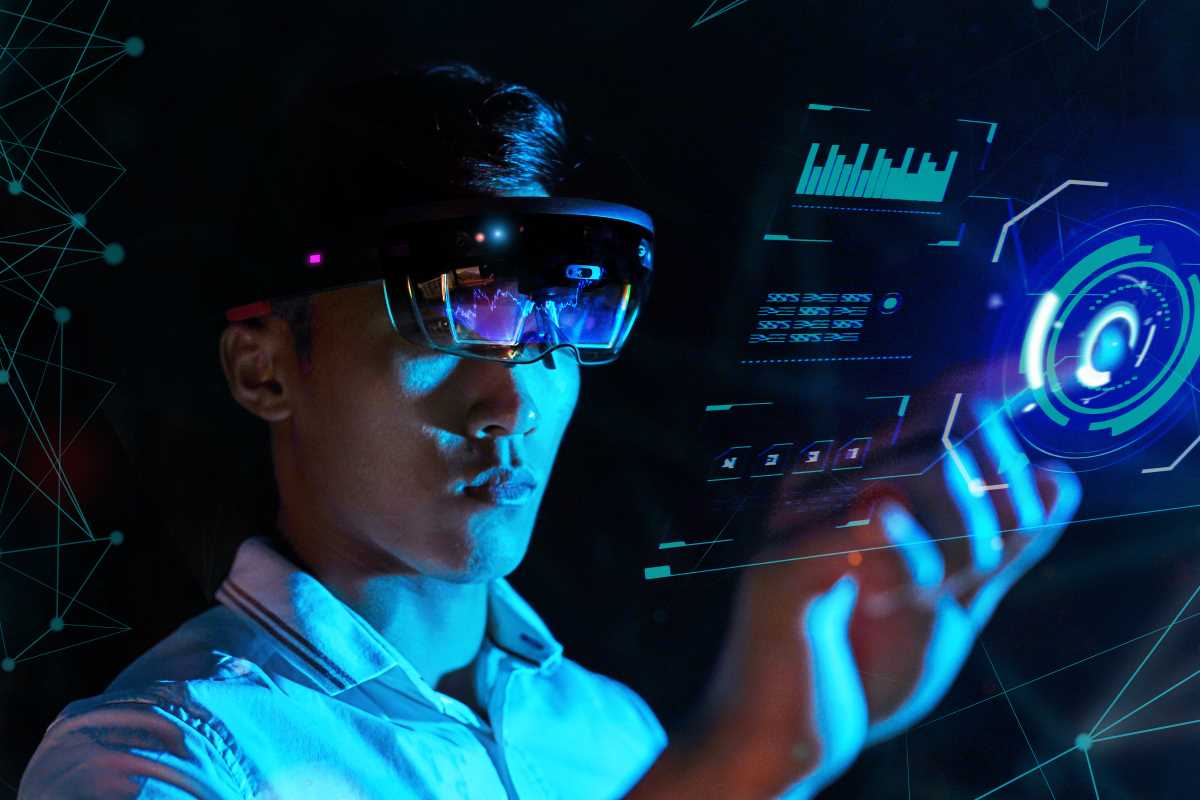Artificial Intelligence (AI) is no longer confined to sci-fi novels or futuristic fantasies. It’s reshaping the very fabric of how we live, work, and learn. One area where AI is causing significant disruption is in academic research. You’ve likely come across the term “AI” in various contexts, but what does it mean for researchers and why is it a big deal? The truth is, AI is redefining how knowledge is created, analyzed, and applied. Keep reading to discover how AI is pushing the boundaries of academic research and unlocking new frontiers for discovery and innovation.
What Is AI, Really?
Before we get into the nitty-gritty, let's clarify what AI actually means. Artificial Intelligence refers to technology that can perform tasks traditionally requiring human intelligence. This includes problem-solving, understanding language, recognizing patterns, and making decisions. AI ranges from relatively simple algorithms, like those used in online shopping recommendations, to advanced systems capable of driving cars or even creating complex art.
When applied to the realm of academic research, AI becomes a powerful ally. Research often involves repetitive, data-heavy tasks that demand precision and attention to detail. By leveraging AI's ability to process, analyze, and make sense of vast quantities of data, researchers can streamline their work and uncover insights at speeds that were unimaginable a decade ago.
To put it simply, think of AI as a smart and lightning-fast assistant, capable of doing in minutes what might take a human weeks, if not months. Now, imagine the doors this opens for researchers across the globe.
How AI Helps Academic Researchers
1. Supercharging Data Analysis
One of the biggest strengths of AI is its ability to analyze data quickly and with astonishing accuracy. Scientific research often requires combing through massive datasets, ranging from climate records spanning centuries to genetic sequences in biology. For a human researcher, this can be a slow, labor-intensive process. AI, on the other hand, excels at identifying patterns, trends, and anomalies across vast amounts of data, often within a fraction of the time.
Real-World Applications:
- Climate Science: AI is used by environmental researchers to study climate change. It analyzes gigabytes of weather data to help researchers predict future risks like floods, droughts, and heatwaves. The insights gained allow governments and organizations to plan effectively for climate impacts.
- Medical Research: Alzheimer’s studies rely on AI to examine brain scans, comparing healthy and diseased brain tissues. This has led to faster identification of early-stage indicators, giving patients a better shot at timely treatment.
- Social Sciences: AI is helping sociologists analyze massive datasets from social media to understand trends in public opinion or the spread of misinformation.
By handling these tasks, AI frees up researchers to focus on drawing conclusions, refining theories, or applying their findings in the real world.
2. Streamlining Literature Reviews
Literature reviews are a fundamental phase of academic research. They involve sifting through countless research papers, articles, and journals to understand what’s already been studied. Traditionally, this has been an incredibly time-consuming process. Researchers might spend weeks identifying relevant studies and summarizing their findings.
AI is flipping this process on its head. Tools like Semantic Scholar, ResearchRabbit, and Scholarcy can scan thousands of academic papers, identify key insights, and suggest the most relevant studies based on a researcher’s query. These tools don’t just save time; they also ensure that nothing important slips through the cracks.
Examples of Efficiency:
- A researcher studying renewable energy sources might input "solar energy storage systems" into one of these platforms. Within minutes, the AI provides a curated list of the most cited and relevant papers, helping the researcher focus their efforts.
- Medical professionals evaluating existing research on COVID-19 treatments have used AI tools to rapidly uncover patterns and promising leads, even amid the overwhelming number of papers published during the pandemic.
This ability to quickly pinpoint valuable information means researchers can devote more time to innovation and less to hunting for resources.
3. Better Predictions and Simulations
Prediction and simulation are two areas where AI truly shines. Fields like engineering, physics, and medicine rely on simulations to test theories or predict outcomes without real-world experimentation. AI enhances this process by introducing models that are both faster and more accurate.
Notable Use Cases:
- Drug Discovery: Traditionally, developing a new drug can take over a decade and cost billions. AI is greatly reducing this timeline. By simulating how different molecules interact with the human body, AI helps scientists identify promising candidates early on, even before clinical trials begin. This was crucial during the COVID-19 pandemic, where AI aided in identifying potential treatments and vaccines at record speeds.
- Engineering: Structural engineers are now able to simulate how buildings or bridges will perform under extreme conditions like earthquakes, floods, or strong winds. By predicting vulnerabilities, AI ensures safer designs are implemented.
- Astronomy: Space researchers are using AI to simulate the behavior of galaxies or black holes that are billions of years old, giving us clues about the universe’s origins.
With AI’s help, researchers can explore hypotheses that might otherwise be too expensive, time-consuming, or downright impossible to test in real-world scenarios.
4. Customizing Research Tools
The beauty of AI is that it’s becoming more accessible than ever. Even researchers with limited technical knowledge can now integrate AI into their work, thanks to user-friendly platforms like IBM Watson, Google Cloud AI, and Microsoft Azure. These platforms offer ready-to-use models that can be easily tailored to the specific needs of various fields.
For instance, AI-powered transcription tools convert hours of interviews into text within minutes for social science or ethnographic research. Similarly, natural language processing techniques are helping historians analyze old manuscripts or legal scholars extract insights from decades of case law.
The democratization of AI tools means researchers don’t need to rely on a team of programmers to get started. They can use intuitive interfaces or even pre-trained models to accelerate their work.
5. Fighting Bias in Research
Bias is a hidden but pervasive issue in academic research. Whether it stems from sample selection, data interpretation, or publication practices, it can skew results and reduce the reliability of findings. AI has the potential to combat bias in several ways.
First, AI can analyze data more objectively, flagging inconsistencies or patterns that might indicate human bias. Second, it can be programmed to ensure diverse datasets are used in studies, reducing the dominance of certain demographics or perspectives.
Challenges with AI Bias:
However, it’s not all smooth sailing. AI systems themselves can perpetuate bias if they're trained on flawed or unrepresentative data. For example, facial recognition algorithms often perform poorly on non-white individuals because they were trained on datasets that didn’t include enough diversity. This issue underscores the importance of carefully curating training data and maintaining human oversight during the research process.
While not a perfect solution, AI offers a path toward more equitable and accurate research outcomes when implemented thoughtfully.
Potential Challenges of AI in Academic Research
While AI is undoubtedly a game-changer for researchers, it comes with its own set of challenges.
- Data Quality
- AI’s performance is only as good as the data it’s fed. Poor-quality or biased data can lead to misleading results, jeopardizing the validity of entire studies. This places a renewed emphasis on data curation and preprocessing before AI models can be applied.
- Ethical Concerns
- How do we credit AI in collaborative research? If an AI system contributes to a breakthrough, should it be listed as the “author”? Or what happens if AI-generated results contradict ethical research principles? Answering these questions will require a careful balance of technological innovation and ethical guidelines.
- Job Displacement
- There’s growing anxiety in some academic circles that AI might devalue traditional research skills. While AI isn’t here to replace researchers, the shift in focus could marginalize repetitive, manual tasks previously integral to some academic roles.
Navigating these challenges responsibly will be critical if we want AI to enhance—not diminish—the integrity of academic research.
Why Does This Matter to You?
Whether you're a budding researcher, tech enthusiast, or simply someone looking to future-proof your career, understanding the intersection of AI and academic research is vital. AI is here to stay, and its applications stretch far beyond laboratory benches and academic journals.
Knowing how to harness its capabilities will equip you with problem-solving skills, foster innovation, and keep you relevant in a constantly changing job market. Even if you’re not a scientist or researcher, learning the principles behind AI and machine learning can help you stand out in fields from healthcare to marketing.
 (Image via
(Image via





